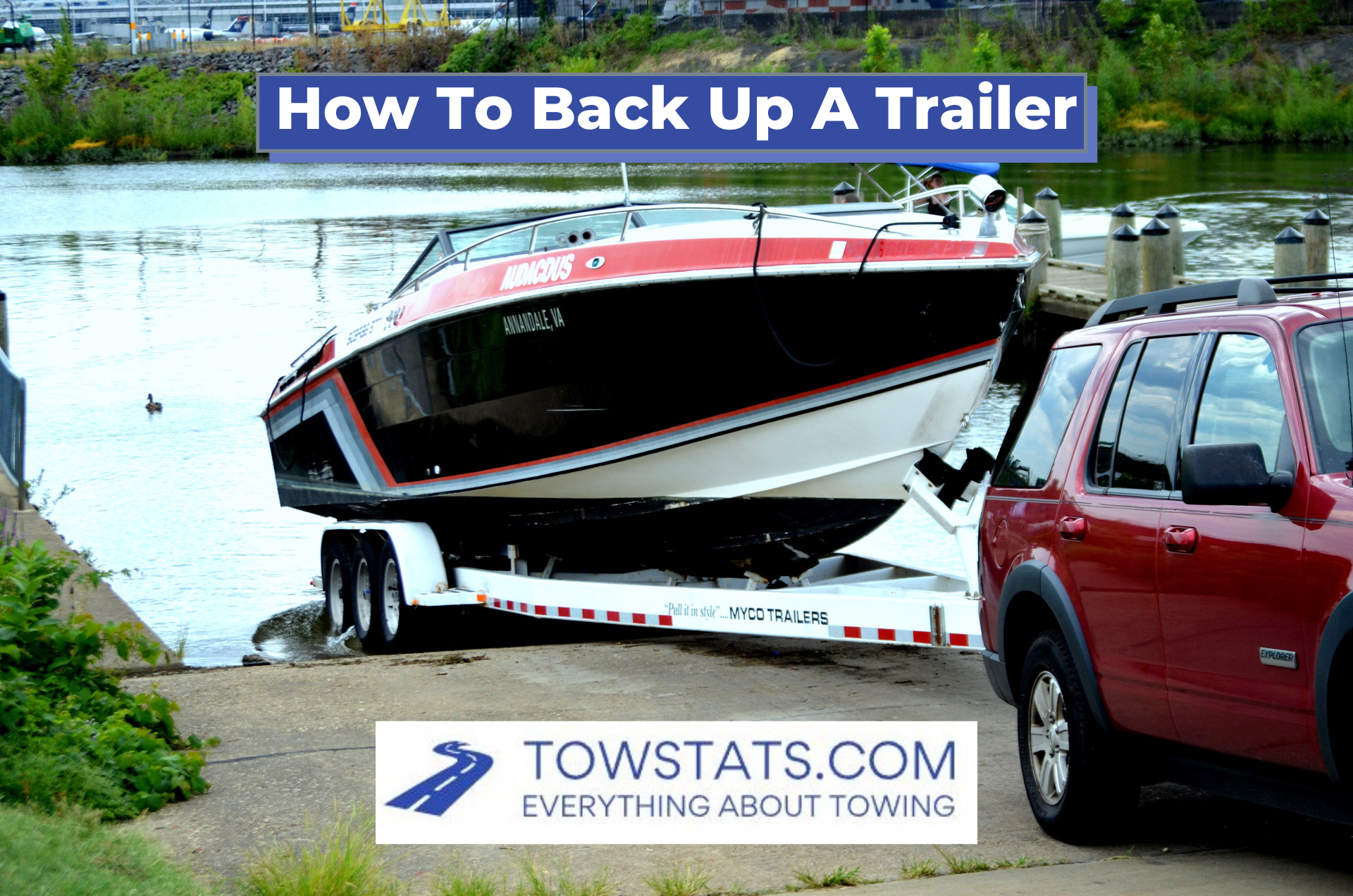It’s inevitable. At some point, you’re going to have to back up a trailer. Whether you’re hauling a little cargo or a camper, knowing how to back up a trailer is essential.
In this guide, we’ll walk you through the basics of backing up a trailer and share some tips that will make the process simple.
How To Back Up A Trailer
- Use The Bottom Of Your Steering Wheel
Your hands are now aligned with turning the wheel in the same direction you want the trailer to go.
This is much easier than turning from the top of the steering wheel, which frustrates many drivers who are new to towing a trailer.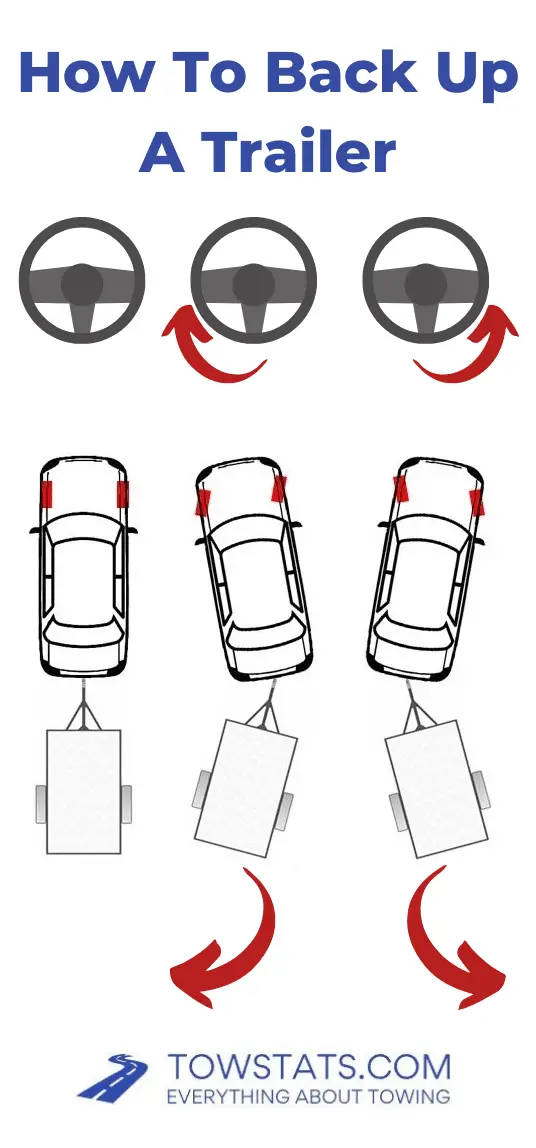
- Put Your Flashers On
Always engage your 4-way flashers or hazard lights while maneuvering a trailer.
- Use Your Mirrors
Adjust your mirrors to give you a good field of view.
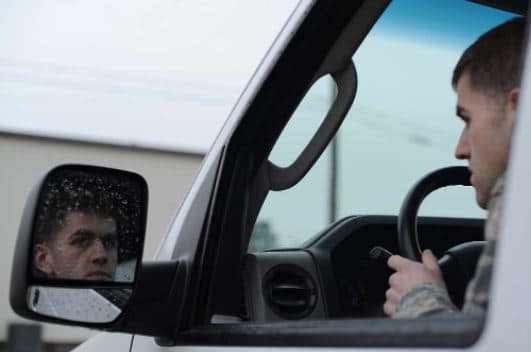
- Choose 3 Reference Points When Backing Up Straight
Line up a point of reference on your vehicle and on your trailer, such as the fenders on each.
Choose your target as the third point of reference, and line these up as you back up your trailer in a straight line.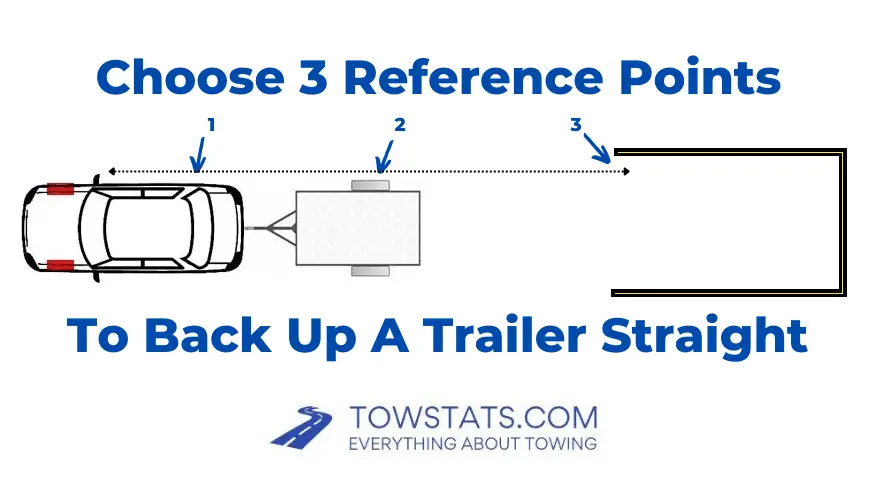
- Keep An Eye On Your Surroundings
Whether you’re backing up in a straight line or around a corner, always be aware of what’s around, behind, and in front of your tow vehicle and trailer.
- Look Over Your Left Shoulder For Left Turns
If you are backing up a trailer with a left hand turn, look over your left shoulder.
Focus on your trailer wheel’s placement until you have it lined up with your target.
Once your trailer wheel is in place, straighten everything up and back the trailer in. - Look Over Your Right Shoulder For Right Turns
If you are backing up into a right hand turn, look over your right shoulder and out of the rear window of your vehicle.
Focus on the right rear corner of your trailer and maneuver the trailer until it’s lined up with your target.
Once the trailer is lined up, you can straighten everything out and back the trailer up. - Make Wide Turns Initially
Some people new to towing suffer from turning their tow vehicle too little, resulting in a lot of correction throughout the trailer backup process.
Start with wider turns and take things slow, and you can make smaller adjustments as needed. - Finish Up In A Straight Line
You won’t always have the opportunity to back up directly to your target.
If you find yourself in a tight spot or backing around a corner, get your trailer in position and then pull your vehicle forward if possible to straighten things out.
Then you can proceed with backing up the rest of the way in a straight line. - Use A Helper If Possible
Have a helper stand near (but not behind) the trailer where you can see them from your side mirror.
It’s important that they can see you from where they’re standing as well.
Agree on some hand signals they’ll use to guide you on whether the trailer needs to back up, turn left, or turn right while you are backing up. - Take Your Time
It can be stressful if others are waiting on you, but rushing things will only cause problems and take more time to correct if errors are made.
Take your time and go slow to nail it on the first try. - Practice Makes Perfect
Backing up trailers is a skill that’s built through repetition.
Practice ahead of time in an empty parking lot or in your driveway at home to get familiar with the dimensions of your trailer and tow vehicle to save yourself frustration.
Additional Tips For Backing Up A Trailer
Now that we’ve covered the key basics, there are a few extra nuggets and techniques that are important to know.
Read on to bring your trailer backup skills to the next level!
Longer Trailers Are Easier To Back Up
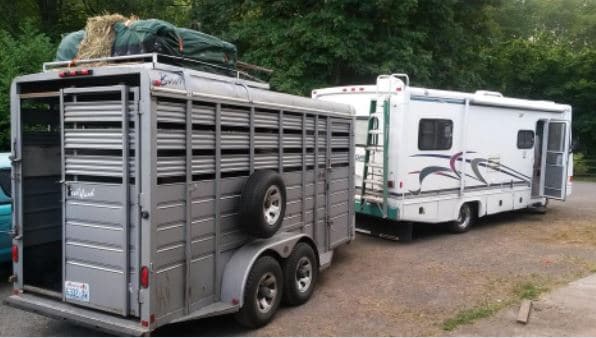
Believe it or not, but longer trailers are easier to back up thanks to their longer response time.
This will give you extra time to correct any steering inputs and get your trailer situated properly.
Short Trailers Can Be Tough
Shorter trailers are actually a little more difficult to back up because they instantly react to any steering miscalculations.
This just means you’ll need a little more practice backing up a short trailer.
Don’t Rely On Your Backup Camera
Backup cameras are extremely convenient and are great for lining things up when hooking up a trailer, but aren’t the best when you’re backing up.
Some trailers are too large for your backup camera to see past, and you can’t keep aware of your full surroundings if you’re looking at your backup camera screen.
Learn to rely on your mirrors and looking over your shoulders for best results.
Tow Mirrors Can Help
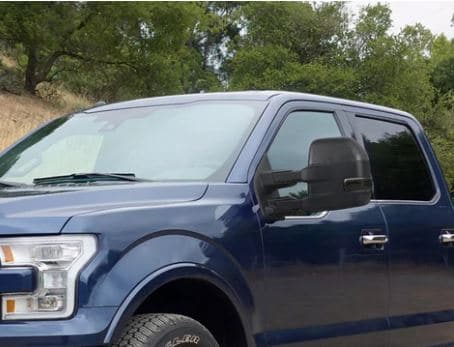
If your trailer blocks your rear view mirrors, you can install tow mirrors onto your side mirrors to give you a much better view.
Think Of Your Vehicle “Pushing” The Trailer
Your vehicle and trailer are actually two separate parts, and each of them are working together.
Sometimes it’s easier to visualize the back end of your tow vehicle pushing your trailer, kind of like the cars on a train.
Get Out And Look Around
If you’re backing a travel trailer into a campsite or moving a trailer to a driveway, always get out and assess the situation from the destination.
Sometimes seeing things from behind your tow vehicle and trailer can give you lots of information you wouldn’t otherwise see from your vehicle.
Plan Your Approach
If possible, plan ahead on how to best position your tow vehicle and trailer to make the back up process as easy as possible.
Sometimes driving past your target and “swooping” out at a small angle, and pulling forward will put your trailer at the best position possible to back it in easily.
Here’s a good explanation of this maneuver that is referred to as “the scoop”:
Don’t Jackknife Your Trailer
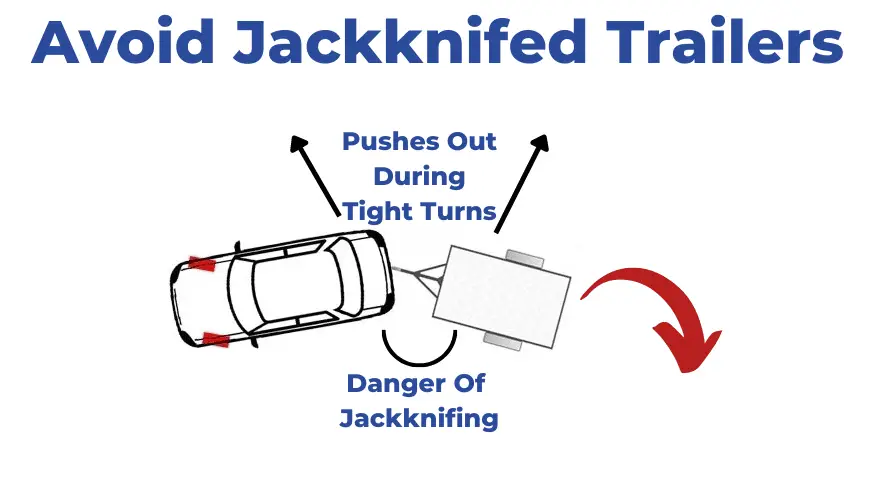
Jackknifing occurs when the trailer goes perpendicular to the tow vehicle.
This is usually a result of excessive steering and can damage both your vehicle and trailer.
You can avoid a jackknifed trailer by taking things slow, pulling forward, and correcting your turns if things get misaligned.

